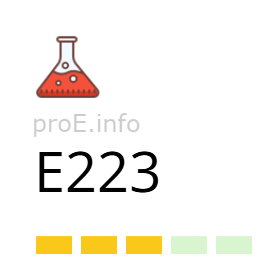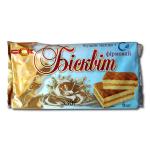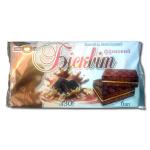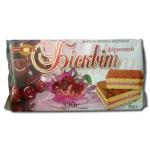
Other names for the additive (synonyms)
General Information
Sodium metabisulfite (food additive E223) is an inorganic compound, a sodium salt of disulfurous acid, which is used in the food industry as a preservative and antioxidant.
The chemical formula of the substance is Na2S2O5. Externally, additive E223 appears as a white crystalline powder with a strong odor of sulfur dioxide.
Industrial production of sodium metabisulfite involves passing sulfur dioxide through a soda-sulfite solution. The manufacturing process of additive E223 can be described by the following series of chemical reactions:
- 2NaOH + SO2 → Na2SO3 + H2O;
- Na2SO3 + SO2 → Na2S2O5.
When mixed with water or heated above 65 °C, E223 undergoes a reverse decomposition reaction, releasing a pungent and toxic gas. Due to this property, additive E223 is used as an antimicrobial and bleaching agent.
Effects on the Body
Benefits of additive E223
This additive does not provide any beneficial effects to the human body.
Risks of additive E223
When consuming products containing sodium metabisulfite, SO2 ions are released in the gastrointestinal tract, which can trigger allergic reactions and asthma attacks in sensitive individuals. In the body, additive E223 breaks down into sulfites, which are metabolized in the liver into sulfates and excreted in urine.
In industrial settings, accidental eye contact with sodium metabisulfite may cause burns and injuries. Ingestion of E223 powder in its pure form can severely damage the gastrointestinal tract.
According to the EFSA 2022 assessment, the current toxicological database on additives E220–E228 (including E223) is considered insufficient to establish an acceptable daily intake (ADI). As a result, the temporary ADI of 0.7 mg SO2-equivalents/kg body weight was withdrawn. The Margin of Exposure (MOE) approach is now used to assess risk, and estimated consumption levels in most population groups are concerning, as MOE values were below the safe threshold of 80.
Studies also noted potential neurotoxic effects of sulfites (delayed visual response), necessitating a reassessment of safe doses. Despite low acute toxicity, EFSA recommends revising the hygiene standards for E223 content in food products.
Uses
Thanks to its antimicrobial and antioxidative properties, E223 prevents the growth of molds, yeasts, and bacteria, while also preserving the color and texture of products. In food, E223 can help maintain vitamin C content by preventing oxidation.
In the food industry, additive E223 is used for:
- preserving dried fruits (including raisins);
- processing fruit and vegetable purees (tomato paste, mashed potatoes);
- wine, beer, and juice production — to prevent oxidation and fermentation;
- confectionery products (marshmallows, marmalade, pastille);
- starch-containing products to prevent browning.
Beyond the food industry, sodium metabisulfite is used:
- in pharmaceuticals — as a filler in certain dosage forms;
- in water treatment systems — to remove residual chlorine;
- for equipment disinfection;
- for stump and wood residue removal.
Legal Status
In the European Union, additive E223 is listed as an approved substance under Regulation (EC) No 1333/2008. However, EFSA has recommended revising specifications for toxic impurities (arsenic, lead, mercury) and setting limits for cadmium. In Ukraine and the United Kingdom, additive E223 is also officially permitted for use in the food industry, provided acceptable levels are observed.



